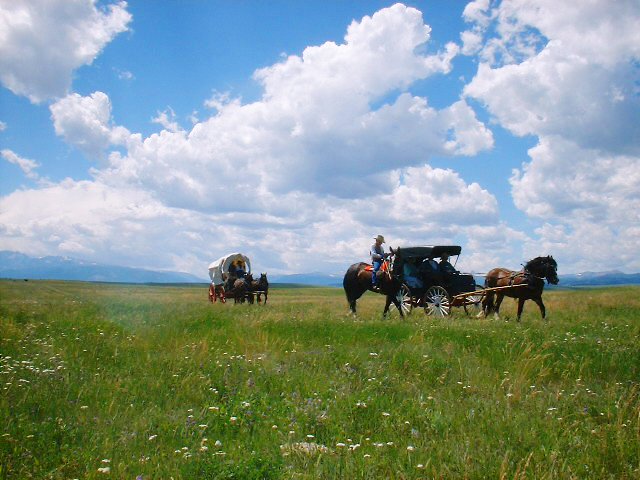HOW YOU CAN TRAIL CLARK DOWN THE YELLOWSTONE
July 20, 2015, The Billings Gazette
The Corps of Discovery once passed through the Yellowstone Valley where Park City, Laurel, and Billings now stand. On Friday and Saturday, those of us fortunate enough to live along this stretch of river have invitations to walk the same ground those Western explorers trod in buckskin and moccasins 209 years ago.
On Friday, the Billings Chamber of Commerce will host a dedication for Clarks Crossing, a spot on the river at the south end of Washington Street. According to the Journals of Lewis and Clark, four men from Capt. William Clark’s party crossed from north to south on the Yellowstone near the mouth of the Clarks Fork on July 24, 1806.
Nearly a year ago, the U.S. Board on Geographic Names approved an application to officially name Clarks Crossing, based on research from dedicated local history and map buffs. Capt. Clark named the nearby Clarks Fork river after himself – after almost mistaking it for the Bighorn River. The captain was following a map provided by an Indian chief, a map that showed the Bighorn, but not the Clarks Fork.
Here’s how Clark described the river that he named: “This last River is 150 yards wide at its Mouth and 100 a Short distance up the water of a light Muddy Colour and much Colder than that of the Rochejhone a Small Island is Situated immediately in its mouth.” On the island, Clark wrote, there was an Indian lodge, “60 feet diameter at its base built of 20 poles each pole 2½ feet in Secumpheranc and 45 feet Long built in the form of a lodge & covered with bushes.” Clark, traveling from near present-day Park City in two hand-hewn cottonwood canoes with the rest of his party, expected to meet up with Sgt. Nathanial Pryor and three other men who were driving horses overland. But the captain got impatient and continued downriver before Pryor’s group arrived. As Gazette outdoors editor Brett French has written, Pryor probably was delayed because the horses kept running off to chase buffalo. Also, the four explorers had only 24 horses remaining after unseen Indians stole 26. It would have been difficult to cross the river there with horses, especially because the summer of 1806 was especially wet. The next day, on July 25, 1806, Clark carved his name into the tall sandstone rock he named in honor of Sacajawea’s son, whom he called Pomp.
Pompeys Pillar National Monument and Friends of Pompeys Pillar will host an all-day celebration of Clark Day Saturday, starting with a bird walk and pancake breakfast at 7 a.m. and ending with campfire stories at 6:30 p.m. Pryor’s group didn’t meet up with Clark until Aug. 8. By then, the rest of the horses had been stolen as they camped west of Pompeys Pillar. The four men fashioned a boat out of tree branches and buffalo hide and continued downriver. History is on our doorstep, Billings. On the 209th anniversary of the most famous travels in the Yellowstone Valley, take a walk, a drive, or a bike ride. Discover history for yourself. Read more: http://billingsgazette.com/news/opinion/editorial/gazette-opinion/gazette-opinion-how-you-can-trail-clark-down-the-yellowstone/article_c36ea5eb-b848-50c8-b61b-8bba73ef3c55.html#ixzz3hJQ9u2LS





